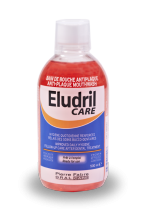Brushing and sensitive teeth
Suitable brushing techniques
Most people press too hard when they brush and risk damaging the enamel. In addition, harsh brushing on the fragile edge of the gum can make them recede and expose the dentine. To brush your teeth correctly, angle the bristles of the toothbrush at 45° to the gum, and brush from the gum down towards the tip of the teeth.
If you are unsure about how effective your brushing method is on dental plaque, ask your dentist to show you how to brush your teeth correctly. They may advise you to use a plaque-disclosing dye. This substance dyes the plaque and lets you check how effective your brushing technique is.
An ultra-soft toothbrush
Choosing the right toothbrush is essential for people with sensitive teeth. Use a toothbrush with soft bristles or, better still, a toothbrush that is specially designed for sensitive teeth. In the worst cases, you can even opt for a surgical toothbrush (the type used after mouth surgery). Ask your dentist or pharmacist for advice. Fine soft bristles with rounded and tapered tips will allow you to brush more effectively and easily.
A toothpaste designed with sensitive teeth in mind
Toothpaste for sensitive teeth have several purposes are formulated to clean the teeth without being harsh, remineralise teeth and protect them from acids thanks to the fluoride that binds to the enamel and act on pain transmission to the nerves by potentially sealing the tubules in exposed dentine. Ask your pharmacist or dentist ELGYDIUM SENSITIVE which is formulated address dentine hypersensitivity.

